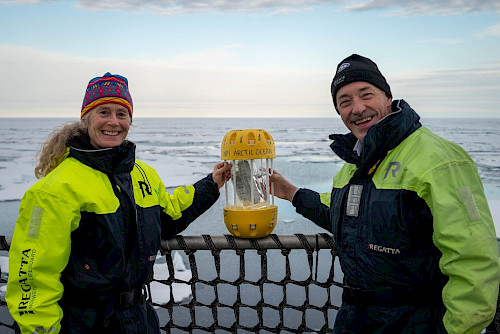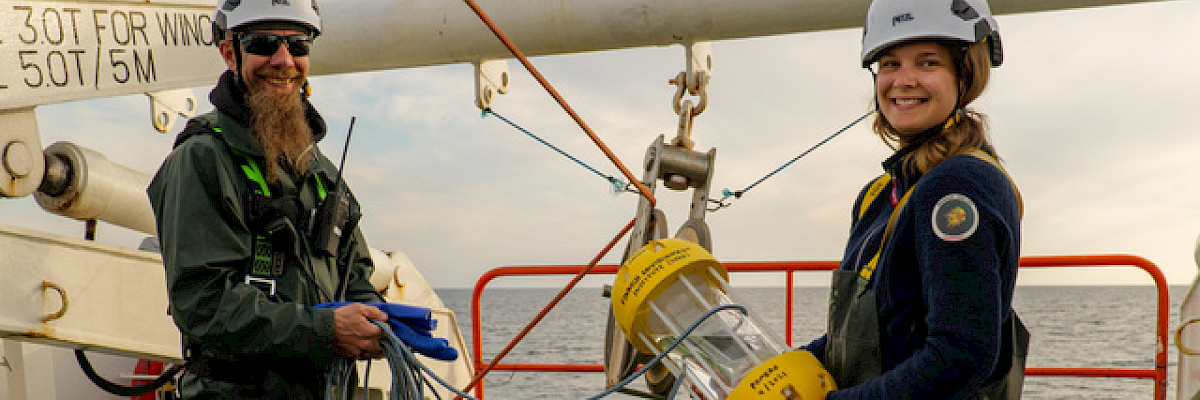
Plastic in a Bottle: Live Map
PAME launched the first bottle equipped with a GPS transmitter into the Atlantic on 12 September 2019. Called “plastic in a bottle”, the capsule will simulate how marine litter and plastics travel far distances into and out of Arctic waters. The collected data will feed into a regional action plan on marine litter and serve as an outreach tool to create awareness around the growing concerns on marine litter in the Arctic.
NO CAPSULE IS CURRENTLY ACTIVE
Plastic in a bottle #1: Iceland
Launched: 12 September 2019 (from Reykjanes peninsula)
Landed: 6 April 2020 (Tiree, Scotland)
Days at sea: 207
See full story below
Plastic in a bottle #2: Netherlands
Launched: 31 May 2021 (from Texel, Netherlands)
Landed: 15 July 2021 (Terschelling (Netherlands)
Days at sea: 4 5
- Re-launched: 8 August 2021 (Netherlands)
- Landed: 27 August 2021 (Sylt, Germany)
- Days at sea: 19
Plastic in a bottle #3 Finland and Norway (1)
Launched: 6 May 2021 (from Northern Baltic Sea)
Landed: 24 September 2021 (Nedre-Öre, Sweden)
Days at sea: 141
Re-launched: 9 June 2022 (Southern Baltic Sea)
Landed: 19 June 2022 (Köpu, Estonia)
Days at sea: 10
Plastic in a bottle #4 Finland and Norway (old)
Launched: 23 June 2021 (from Svalbard)
Landed: 3 April 2023 (Tiree, Scotland)
Days at sea: 649
Plastic in a bottle #5: Norway (1)
Launched: 12 March 2023 (from Barents Sea)
Landed: 17 July 2023 (Porsangerfjorden, Norway)
Days at sea: 127
Plastic in a bottle #6: Finland and Norway (2)
Launched: 3 June 2023 (from Svalbard)
Landed: 6 October 2024 (Gamvik, Norway)
Days at sea: 491
See news story with a video of the launch here
Plastic in a bottle #7: Norway (3)
Launched: 18 August 2023 (Arctic Ocean)
Landed: 21 April 2024 (Drangsnes, Iceland)
Days at sea: 247
November 2023
Northernmost “Plastic in a Bottle” launched to gain insight on Arctic plastic pollution
Launched at 84 degrees north, the capsule will enable the Protection of the Arctic Marine Environment to track how plastics travel in and out of Arctic waters
FROM THE ARCTIC COUNCIL WEBSITE - FULL STORY HERE
The latest Plastic in a Bottle launch is the seventh capsule released since the project started in 2019, and the first one launched around sea ice. The capsule was tossed into the ocean at 84 degrees north during a research cruise for students and early career scientists by the Norwegian Polar Institute on the icebreaker RV Kronprins Haakon.
“According to our knowledge of the area, we anticipate the capsule will drift westward into the Fram Strait, and possibly reach Greenland or Iceland,” said Ole Arve Misund, Director of the Norwegian Polar Institute. “We will track its movements as it drifts along with the sea ice before it is released in the area of the Fram Strait where the ice is melting rapidly.”
Plastic debris can be found on Arctic beaches, in the water column, in sea ice, sediments and even in the bodies of Arctic birds and mammals.
“There are many ways that plastic can make its way into and around the Arctic, whether it’s from rivers, wind, ocean currents or other means,” said Elizabeth McLanahan, Director at NOAA and Vice-Chair of PAME, who was on board the research cruise and tossed the capsule into the sea. “Plastic in a Bottle is a way to help the public visualize how an item of trash – perhaps their water bottle left at a picnic or even on a tourist boat – can travel miles away and affect the marine environment.”
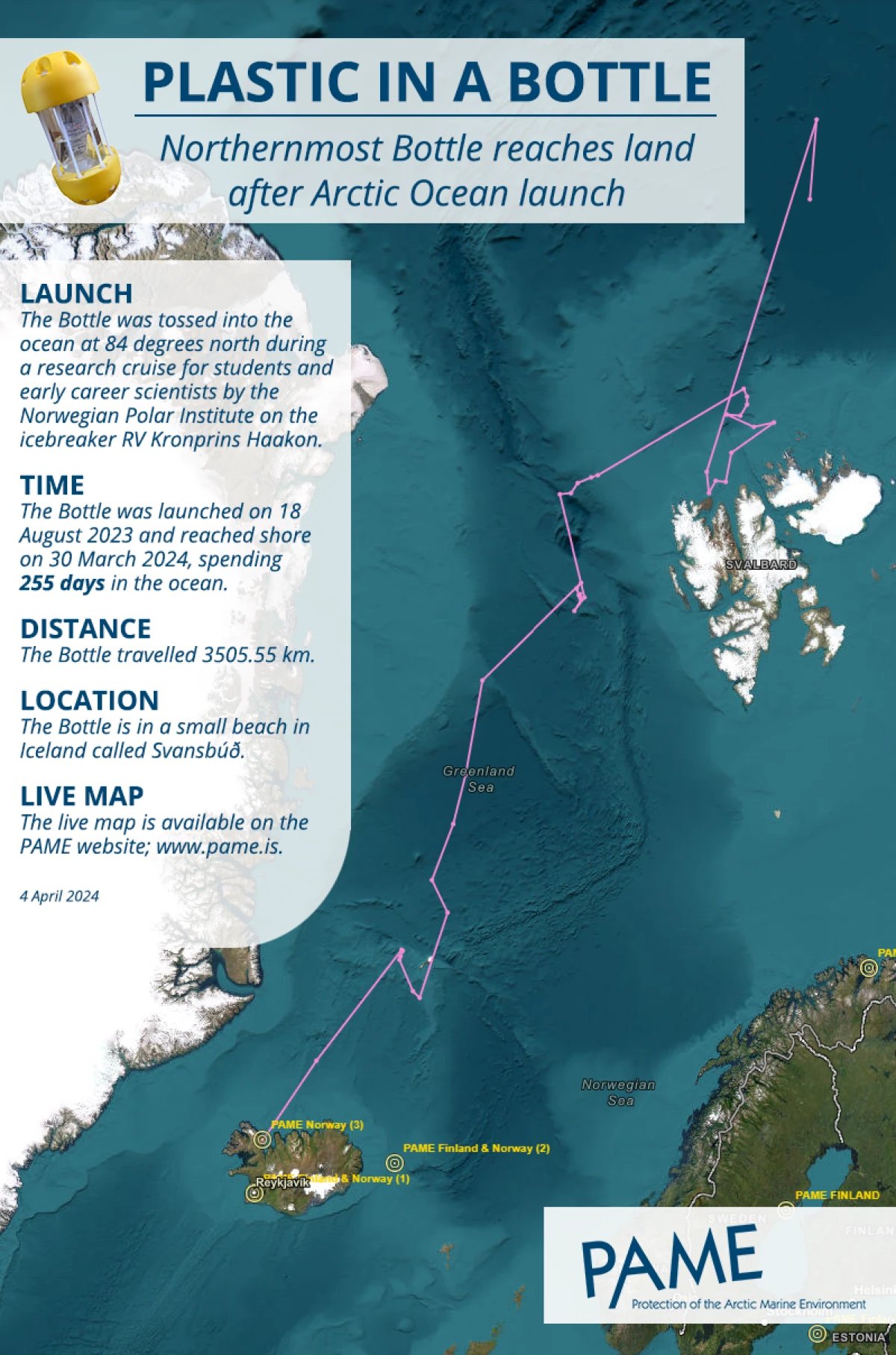
May 2021
THREE CAPSULES LAUNCHED:
Wageningen University & Research and PAME launch a capsule to track the journey of marine litter from the Netherlands
PRESS RELEASE:
See a video about the project (in Dutch)
On 31. May 2021, a special capsule was launched at sea, some 25 miles West of the island of Texel in the Netherlands. The live position of this 'Plastic in a Bottle' capsule can be tracked online and shows the route that plastic waste may travel once it enters the North Sea.
Researcher Wouter Jan Strietman: “Not many people realise what happens to 'our' plastic waste once it enters the North Sea. To see where plastic waste may travel from the Netherlands, our collaboration partner Eelco Leemans of Leeways Marine released a special 'Plastic in a Bottle' capsule from a sailing ship some 25 miles West of the island of Texel in the Netherlands. We invite the public to follow the journey of this capsule with us online”.
“Under the influence of wind and sea currents, this capsule may travel to a nearby beach or, who knows, perhaps even to the Arctic. This is certainly a possibility, since every year, substantial amounts of plastic are transported there from Western Europe and North America. This accumulation of plastics poses a threat to nature, shipping safety and tourism in the region. In the Arctic Marine Litter Project, we are doing more extensive research into the origin and causes of marine litter in the Arctic, helping stakeholders in the region to prevent it at the source”, says Strietman.
The capsule was released to raise public awareness about plastic waste that ends up in the Arctic and the need for action to stop this. The ’Plastic in a Bottle’ communication project is an initiative by the Arctic Council’s Protection of the Arctic Marine Environment Working Group (PAME). The launch of this capsule was organised by Wageningen University & Research and Leeways Marine, in collaboration with PAME and the Dutch Government, who funds the capsule. Once washed ashore, a message inside the capsule will instruct the finder what to do and who to contact.”
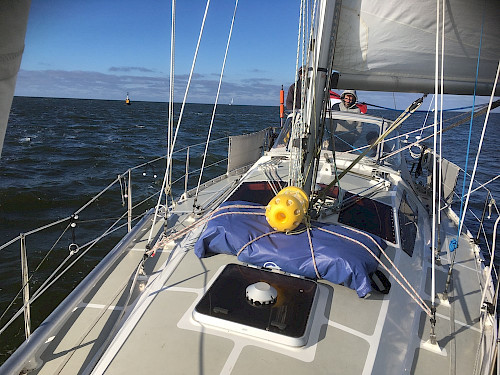
The Arctic Marine Litter Project
There is an urgent need to halt the constant inflow of plastic waste into the Arctic and the most effective solution is prevention at the source. In the Arctic Marine Litter Project, researcher Wouter Jan Strietman and his team of Wageningen University & Research (WUR) work with partners throughout the Arctic to identify the sources, underlying causes of marine plastic pollution in the region. This new knowledge can be used by stakeholders in the region to address this issue more effectively.
Finnish and Norwegian initiative "Northern Marine Litter" launches two capsules
PRESS RELEASE:
Plastic in a bottle sent two new capsules during June 2021 in collaboration with a project “Northern Marine Litter” in Finland and the Norwegian Polar Institute. The project is funded by the Finland’s Ministry for Foreign affairs, and it aims to enhance research and monitoring collaboration between Finland, the Baltic and Arctic states.
The Baltic Sea is a semi-enclosed marginal Arctic Sea freezing over annually and with high pressure from the human activities on the marine environment. Marine litter is also a recognized environmental problem in the Baltic. One of the buoys will be released in the Northern Baltic Sea during an annual research cruise on research vessel R/V Aranda by the Finnish Environment Institute. From the Baltic buoy it is possible to follow the transport of marine litter in a relatively densely populated and closed marine system compared to the Arctic.
A second marine litter capsule funded by Finland was launched in collaboration with the Norwegian Polar Institute from their research cruise west of Svalbard at 77.2725 N and 11.4687 E. The capsule was deployed by Ida Kristin Danielsen from the Norwegian Polar Institute, who works with PAME-related issues at the NPI management department. The capsule started its journey on 23th June and has travelled with current fast, even over 30 km per day and is now north of 80 latitude.
The Svalbard launch is the northernmost for the Plastic in a bottle project so far and will give highlight high Arctic transport routes for marine litter.

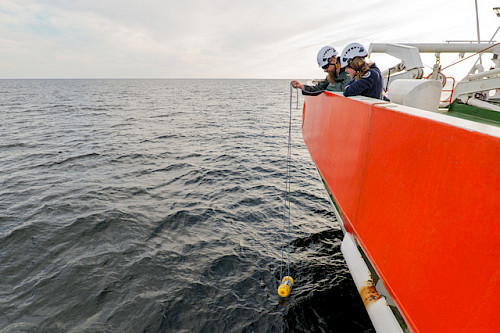
TWO BOTTLES - ONE LOCATION!
Incredibly, two bottles launched three years apart came ashore on the same beach after months in the ocean, haven been launched from different locations! One was launched from Svalbard and the other from Iceland. The one from Svalbard was launched later, and having travelled along the east coast of Greenland, it cought similar streams to the previous one, but three years later. The streams can be seen on the map.
Both were retrieved by Hayley Douglas in Tiree, Scotland.
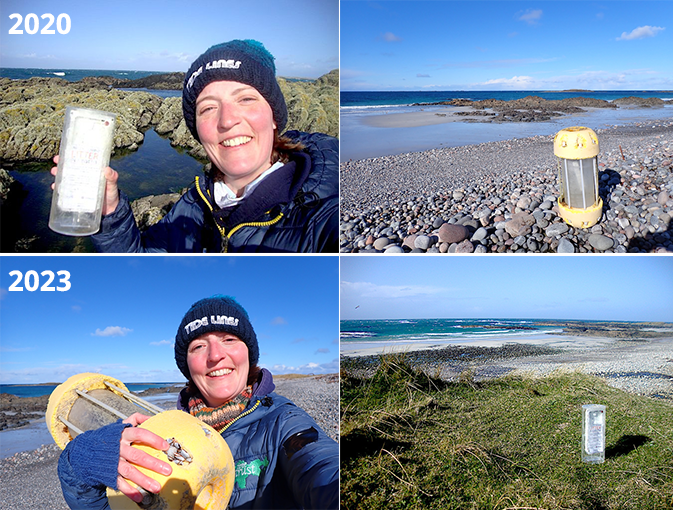
12 September 2019: First Capsule launched
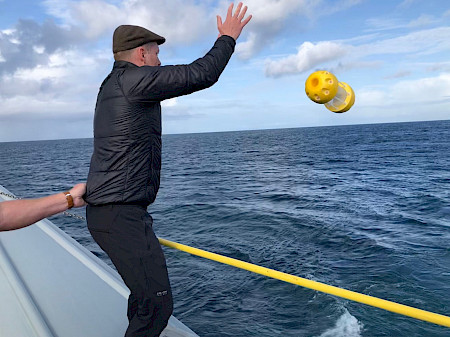 PAME launched the first bottle equipped with a GPS transmitter into the Atlantic on 12 September 2019. Called “plastic in a bottle”, the capsule will simulate how marine litter and plastics travel far distances into and out of Arctic waters. The collected data will feed into a regional action plan on marine litter and serve as an outreach tool to create awareness around the growing concerns on marine litter in the Arctic.
PAME launched the first bottle equipped with a GPS transmitter into the Atlantic on 12 September 2019. Called “plastic in a bottle”, the capsule will simulate how marine litter and plastics travel far distances into and out of Arctic waters. The collected data will feed into a regional action plan on marine litter and serve as an outreach tool to create awareness around the growing concerns on marine litter in the Arctic.
This first plastic in a bottle was sent off from the Reykjanes peninsula by Guðmundur Ingi Guðbrandsson, Iceland’s Minister for the Environment and Natural Resources from the Icelandic Coast Guard vessel Thor in conjunction with the PAME II-2019 Working Group meeting in Reykjavík. Iceland holds the Chairmanship of the Arctic Council until 2021 and places a special focus on marine litter and plastics in the Arctic. The saying “out of sight, out of mind” does not apply to litter that has made their way into the ocean. Currents, streams, waves and wind carry marine litter across the seas. Neither the deep sea nor beaches in the Arctic are exempt from this pollution. However, when it comes to how plastics travel into and out of Arctic waters, our knowledge on the trajectories of this marine litter remains limited. With this capsule PAME is seeking to gain valuable information to better understand this problem.
The saying “out of sight, out of mind” does not apply to litter that has made their way into the ocean. Currents, streams, waves and wind carry marine litter across the seas. Neither the deep sea nor beaches in the Arctic are exempt from this pollution. However, when it comes to how plastics travel into and out of Arctic waters, our knowledge on the trajectories of this marine litter remains limited. With this capsule PAME is seeking to gain valuable information to better understand this problem.
Over the next few months PAME will be launching more bottles from different locations across the Arctic. The bottles were designed and built by Icelandic engineering firm Verkís. Every day, the GPS transmitter sends a signal allowing viewers to follow the journey of the bottle in real time through an online map on the PAME website. “Our aim is to show how expansively marine litter and plastics can travel and to gain a better understanding of how plastics that originate from far away end up on shores in the Arctic. The project is also a great outreach tool to create awareness around the issue of marine litter and plastics in the Arctic”, said Soffía Guðmundsdóttir, PAME’s Executive Secretary.
The PAME Working Group aims at releasing the remaining bottles in different areas across the Arctic. “We have discussed different areas with experts on oceanography and meteorology and a leading expert in Iceland on ocean currents. According to them, one could not expect an object like the plastic capsules could travel long distances to certain areas with ocean currents. Weather and waves may have substantial effects on the capsules in addition to currents,” explained Soffía.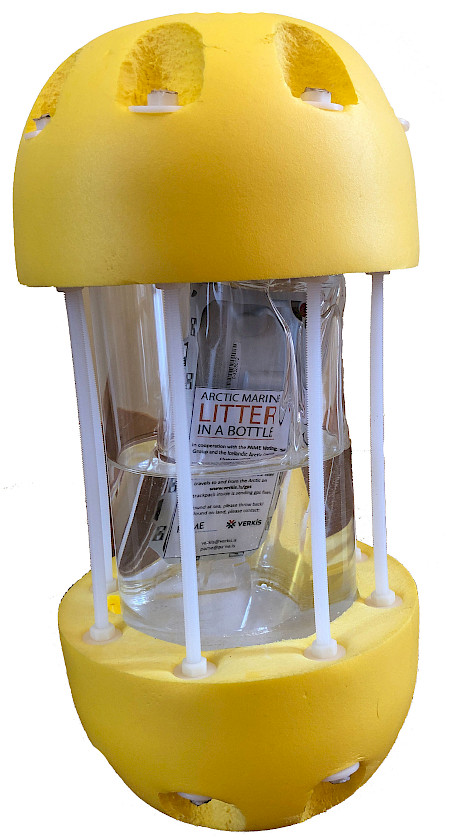 Tackling the issue of marine litter and especially plastics in the Arctic is one of the Arctic Council’s priorities during Iceland’s Chairmanship. At the end of its Chairmanship in May 2021, Iceland plans to provide a comprehensive regional action plan on marine litter and plastics in the Arctic to the Ministers of the Arctic Council.
Tackling the issue of marine litter and especially plastics in the Arctic is one of the Arctic Council’s priorities during Iceland’s Chairmanship. At the end of its Chairmanship in May 2021, Iceland plans to provide a comprehensive regional action plan on marine litter and plastics in the Arctic to the Ministers of the Arctic Council.
PAME worked closely together with Verkís in developing the bottles. Verkís has been involved in similar projects in the past and has seen its bottles travel thousands of miles across the Atlantic Ocean for well over a year – reaching Norway, Scotland and the Faroe Islands after being released from Iceland.
“Verkís is thrilled to take part in conveying such an important message across. We have previously been involved in similar projects with the aim of highlighting how marine litter travels and causes problems across the oceans. One of our capsules travelled over 5000 kilometers and washed ashore in northern Norway, six months later,” Arnór Þórir Sigurðsson, Animal Ecologist at Verkís said.
Once washed ashore, a message inside the bottle will instruct the finder what to do with the bottle.
#PlasticInABottle
See also:
Verkis website
The project gratefully acknowledges funding from the Nordic Council of Ministers.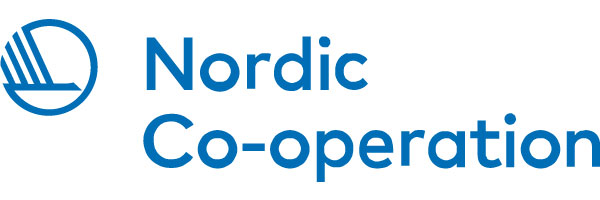
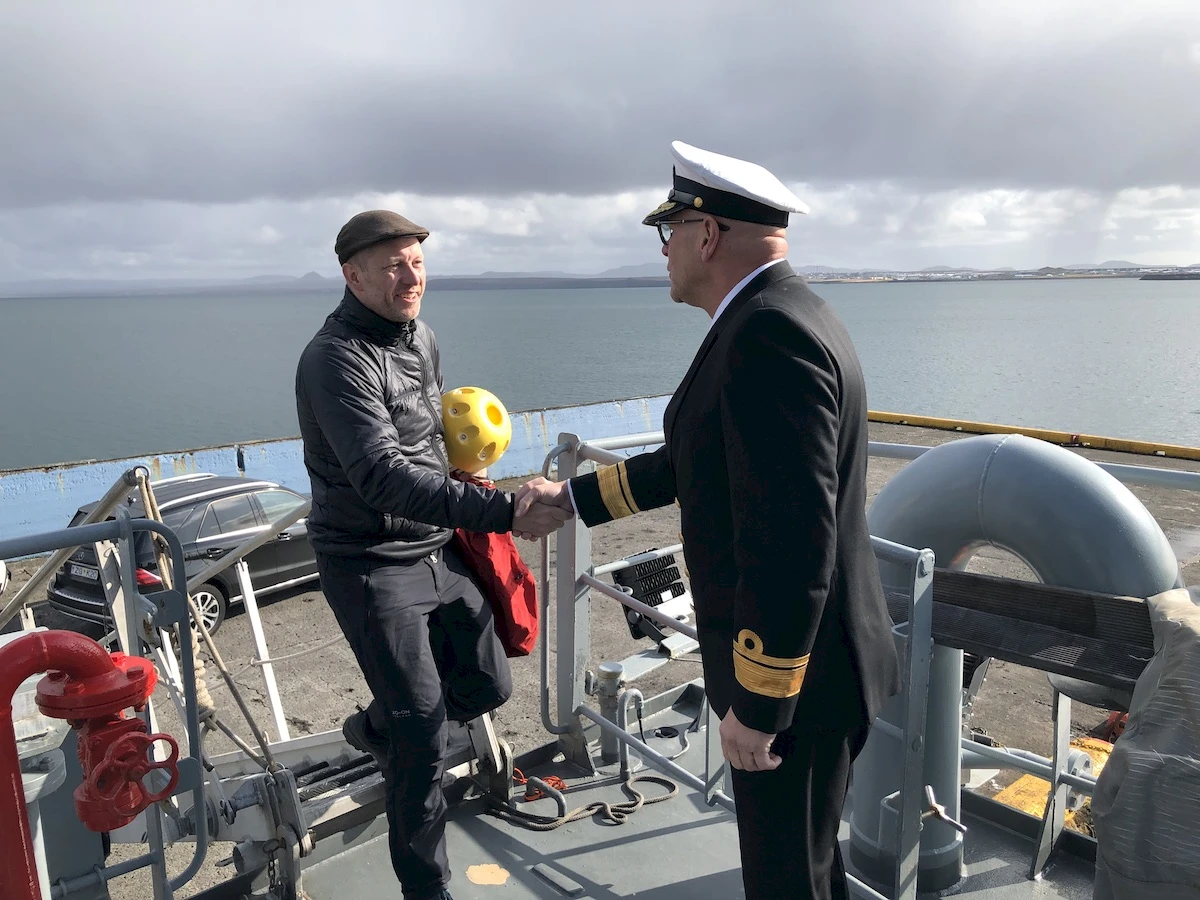

 Arctic Council Working Group
Arctic Council Working Group 